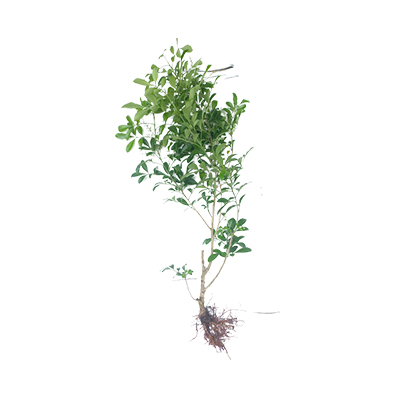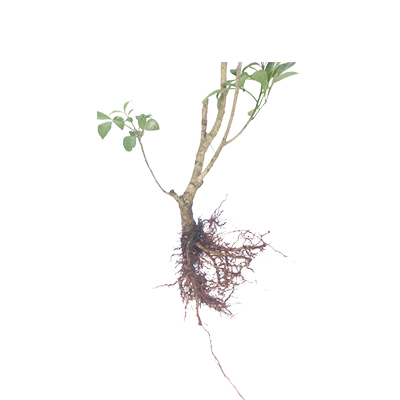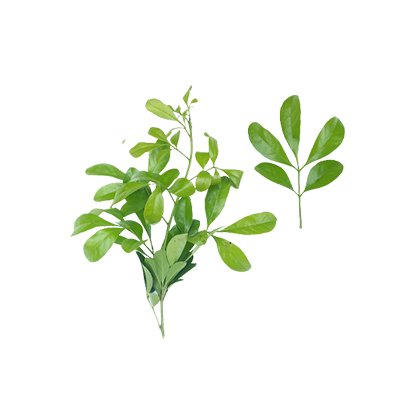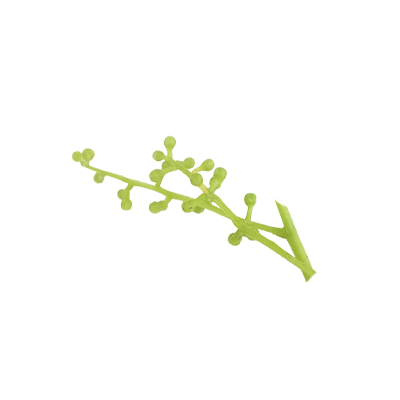Chinese Perfume Plant
Aglaia odorata Lour.
Meliaceae
Location in our garden
Principal



Synonym
Aglaia chaudicensis Pierre
Aglaia duperreana Pierre
Murraya exotica Reinw. ex Miq.
Habitus
Shrubs. A slow-growing, much branched, evergreend shrub or small tree growing up to 10 m tall
Part Used
Leaves
Flowers
Roots
Growing Requirements
Full Sunshine
Need Shade
Habitat
Forest
Mountains
Terrestrial
Overview
Native to China, Vietnam, Cambodia and Thailand. The plant is harvested from the wild for local use as a food, medicine and source of wood and essential oil. It is often grown as a hedge, and is cultivated in gardens of southeast Asia as an ornamental and for the very fragrant flowers which are used to flavour tea, to scent clothes etc. The flowers are commonly found for sale in local markets. Although often cultivated, the species status in the wild remains unclear. It has been classified as 'Near Threatened' in the IUCN Red List of Threatened Species(2011).
Vernacular Names
Pokok telur belangkas (Malay), Sinamomong-sunsong (Philippines), Homklai (Thai), Hoa ngâu (Vietnamese), Trayang (Cambodian), Me shui lan (Chinese), Cinamomo (Spanish), Thanat-ka-wa (Burmese), Khai pou (Laos).
Agroecology
Often found growing on clay soils in the wild at elevations to 700 m.
Morphology
- Leaves - opposite, with 5-9 pairs of secondary veins, usually smooth and glabrous or occasionally with few yellowish-brown stellate scales with a fimbriate margin below.
- Flowers - 5-merous, anthers 5, style-head ovoid or narrowly ovoid, longitudinally ridged and with 2 small apical lobes.
- Fruits - indehiscent, 1-locular.
Cultivation
Propagated by seeds and cuttings.
Chemical Constituents
Triterpenoids, alkaloids, a-humulene, ß-caryophyllene, ß-cubebene, ß-gurjunene, hendecane, linalool, decyladehyde, copaene, β-caryophyllend, β-humulene, β-elemene, β-selinene, humuladienone, humulene epoxide Ⅰ, tridecanic acid methyl ester, β-humulene-7-ol, β-humu- lene-7-ol acetate, juniper camphor, heptadecane, khusol acetate, oetadecane, nonadecane, eicosane, heneicosane, docosane, saponin, flavonoid, tanin.
Traditional Medicinal Uses
- Studies have shown anti-viral, cytotoxic, anticancer, herbicidal, insecticidal, anti-inflammatory properties.
- The roots and the leaves are considered anticonculsive, aromatic, febrifuge, pectoral, stimulant and tonic.
- A water infusion of the roots and leaves has been used as heart stimulant and febrifuge.
- An infusion of the flowers is given as a cooling drink for treating eruptive fevers.
- An infusion of the leaves is taken as a tonic for treating excessive menses and venereal diseases.
- In China, flowers, leaves, and roots used as a tonic. Branches and leaves used for rheumatic pains, toxic swelling, and superficial infections.
Part Used
Reference Sources
- StuartXchange. Philippines Medicinal Plant. (2018). Aglaia odorata. http://www.stuartxchange.com/Sinamomong-sungsong.html. 09-09-21.
- Fern, Ken. Useful Tropical Plants. (2021). Aglaia odorata. http://tropical.theferns.info/viewtropical.php?id=Aglaia%20odorata. 09-09-21.
- Prosea. Plant-net Project. (2016). Aglaia odorata. https://uses.plantnet-project.org/en/Aglaia_odorata_(PROSEA). 09-09-21.



